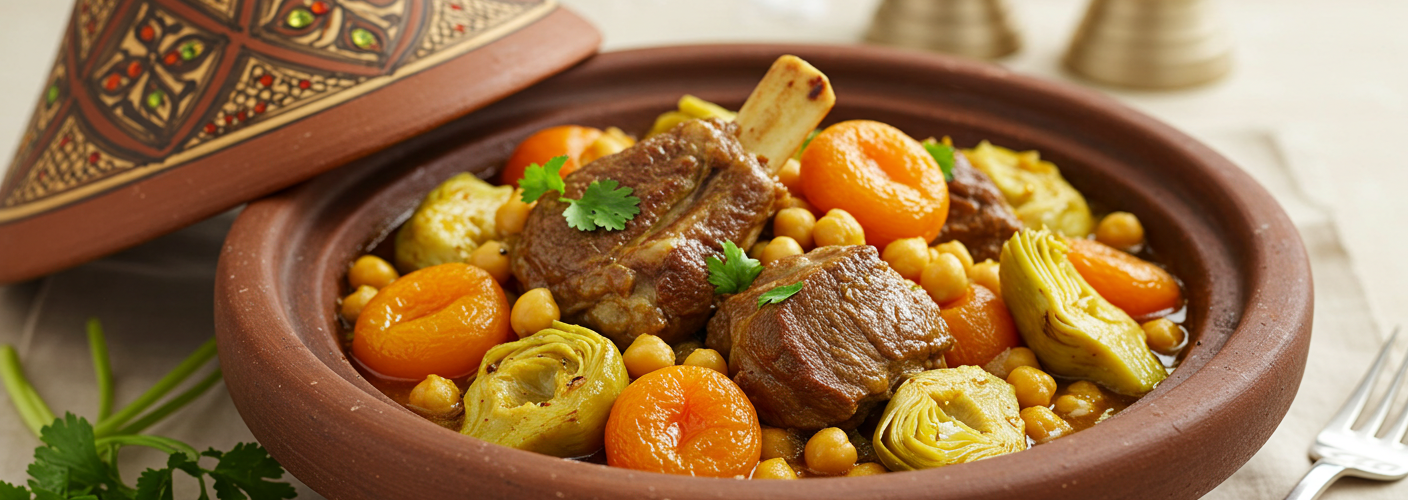If you’re looking to transport your taste buds to the vibrant landscapes of Morocco, nothing does this quite like the iconic tagine. This traditional dish, named after the earthenware pot in which it’s cooked, offers a unique blend of flavors and aromas that exemplify Moroccan cuisine. Whether you’re new to cooking or a seasoned chef, the tagine method is accessible and rewarding.
What Is a Tagine?
A tagine is more than just a dish; it’s an experience. The conical shape of the pot is designed to facilitate slow cooking, allowing moisture from the ingredients to circulate and enhance flavors. Typically made from clay, tagines come in various sizes and designs, making them both functional and decorative. The beauty of a tagine lies in the way it transforms simple ingredients into hearty stews, showcasing the rich culinary traditions of Morocco.
A Symphony of Flavors
Moroccan tagine is characterized by its complex flavor profiles achieved through a harmonious blend of spices and fresh ingredients. Key spices that define a tagine include cumin, coriander, cinnamon, and saffron, often combined with dried fruits like apricots or raisins, nuts, and fresh herbs such as cilantro or parsley.
The choice of protein can vary widely—lamb, chicken, beef, or a delightful medley of vegetables for a vegetarian option. Each ingredient contributes to the overall flavor, coaxed to perfection via slow cooking. For instance, the tenderness of slow-cooked lamb paired with apricots offers a sweet and savory experience that is simply unforgettable.
Culinary Adventure at Home
Cooking a tagine at home is not just about the finished dish; it’s a delightful journey. Begin by selecting your ingredients—opt for fresh produce, quality meats, and the aromatic spices that will best suit your palate. For a classic chicken tagine, begin with aromatic vegetables like onions, garlic, and ginger sautéed in olive oil. Add your chosen spice mix and let the flavors bloom before incorporating the chicken, followed by the addition of broth and your choice of fruits.
The key to a perfect tagine is patience. Allowing the ingredients to simmer leisurely enables the flavors to marry beautifully. While traditionalists might always go for a tagine pot, any heavy-bottomed pot with a lid can suffice. Just be sure to keep the heat low to prevent burning and to produce that signature tender texture.
Serving Tradition
Tagine is traditionally served directly from the cooking vessel, showcasing its beauty. Accompany your dish with fluffy couscous or warm bread, which is perfect for soaking up the delicious sauce. Don’t forget to add a sprinkle of fresh herbs on top for an eye-catching finish.
As you dive into this dish, not only are you enjoying a hearty meal, but you’re also partaking in a cultural heritage that spans generations. Invite friends or family and make it a communal experience—sharing food has always been at the heart of Moroccan culture.
Embrace the Culinary Journey
Whether you choose to stick to traditional recipes or venture into new flavor territories, Moroccan tagine is sure to enrich your culinary repertoire. With its simple preparation and complex flavors, this slow-cooked savory stew invites exploration and creativity in the kitchen. Embrace the journey of creating something delicious and authentic, and your taste buds will thank you for it!




Add comment